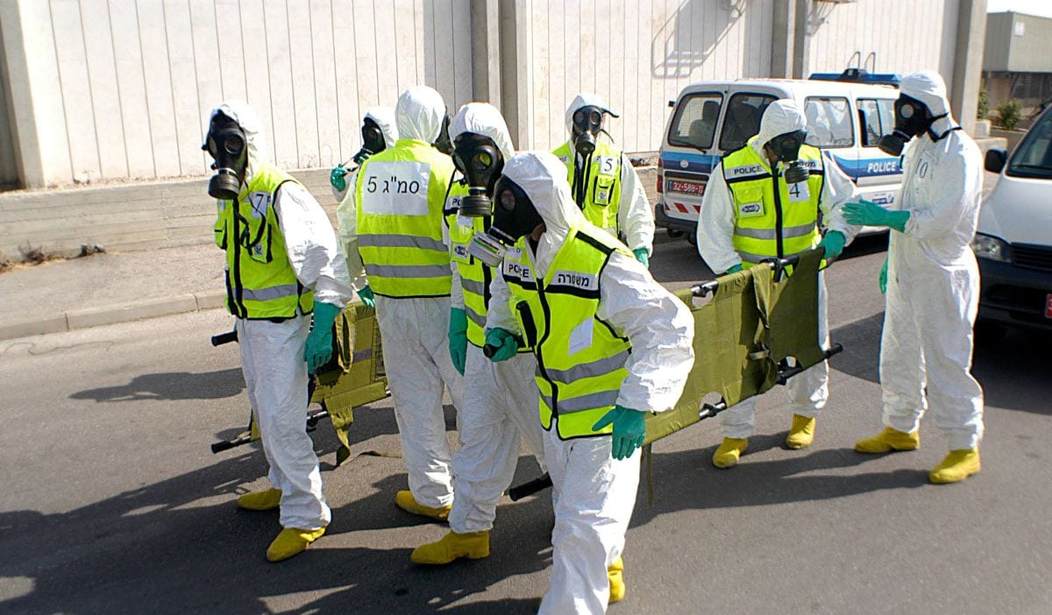If this information had come from Islamic State, we could probably dismiss it as more bombast from the terrorists.
But it did not originate with ISIS. A report from the EU Parliament is making some shocking claims about Islamic State recruiting scientists to build chemical and biological weapons — weapons that have already been smuggled into Europe.
The report claims that CBRN substances (chemical, biological, radiological, and nuclear) “have been carried undetected into the European Union” and that “Interpol’s monthly CBRN intelligence reports show numerous examples of attempts to acquire, smuggle or use CBRN materials.”
ISIS has recruited experts with chemistry, physics and computer science degrees to wage war with weapons of mass destruction against the West, a shocking European Parliament report has claimed.
The terror organisation, according to the briefing document, ‘may be planning to try to use internationally banned weapons of mass destruction in future attacks’.
The document, which was compiled in the aftermath of the deadly attacks on Paris claimed that ISIS has already smuggled WMD material into Europe.Experts fear that ISIS will be able to exploit a failure of EU governments to share information on possible terrorists.
Already, British police forces have been conducting exercises on how to deal with various types of terrorist attack. But the EU report claims that government should ‘consider publicly addressing the possibility of terrorist attack using chemical, biological, radiological or even nuclear materials’.
The report, ISIL/Da’esh and ‘non-conventional’ weapons of terror warns: ‘At present, European citizens are not seriously contemplating the possibility that extremist groups might use chemical, biological, radiological or nuclear (CBRN) materials during attacks in Europe. Under these circumstances, the impact of such an attack, should it occur, would be even more destabilising.’
Rob Wainwright, head of Europol said after the attacks on Paris: ‘We are dealing with a very serious, well-resourced, determined international terrorist organisation that is now active on the streets of Europe.
‘This represents the most serious terrorist threat faced in Europe for 10 years.’
Mr Wainwright warned that ISIS had serious capabilities in terms of resources and manpower.’
Nomi Bar-Yaacov, Associate Fellow in Chatham House’s International Security Department said: ‘There is a very real risk of ISIS using unconventional weapons in Europe and beyond.’
Wolfgang Rudischhauser, Director of the Weapons of Mass Destruction Non-Proliferation Centre at NATO said: ‘ISIS actually has already acquired the knowledge, and in some cases the human expertise, that would allow it to use CBRN materials as weapons of terror.’
The report claims ‘ISIL/Da’esh has recruited and continues to recruit hundreds of foreign fighters, including some with degrees in physics, chemistry and computer science, who experts believe have the ability to manufacture lethal weapons from raw substances.’
ISIS possessing the raw materials to build a chemical or biological weapon is probable. But to weaponize those materials to carry out a mass casualty attack is, thankfully, much more complicated.
The most obvious target for a chemical weapon is a closed space with a lot of people. A backpack could carry a dispersal system that could cause an enormous loss of life. Subways are ideal targets but have become “hard targets” thanks to security in evidence in every major city of Europe. A larger dispersal system releasing thousands of gallons of chemical weapons is far more likely to be discovered and the plot foiled.
Bio weapons need care and tending, but the dispersal system could be relatively unobtrusive and hundreds could be infected before the terrorist was discovered. But it’s extremely difficult to create a viable bio terror weapon. Ricin, a deadly poison found in nature, is one possibility. But weaponizing a disease like anthrax or smallpox takes an expertise not found in your garden-variety biologist.
A radiological attack or dirty-bomb attack would seem to be far more likely. Nuclear waste from hospitals and research labs is not well tracked (we can do much better), so it shouldn’t surprise us if ISIS has gotten its hands on enough to wreak havoc in a major city. But not only is the nuclear material difficult to handle, there is the question of how large the explosion should be for maximum effect. Most likely even if only a few people were sickened by a dirty bomb blast, the point would be made and the terror spread.
I have no reason to doubt the EU report. But there doesn’t appear to be any evidence that Islamic State has been able to successfully create weapons that could be used in a terrorist attack. What they have are “aspirations” and “goals.” And given the success of ISIS in the past, this report certainly shouldn’t be ignored.










Join the conversation as a VIP Member